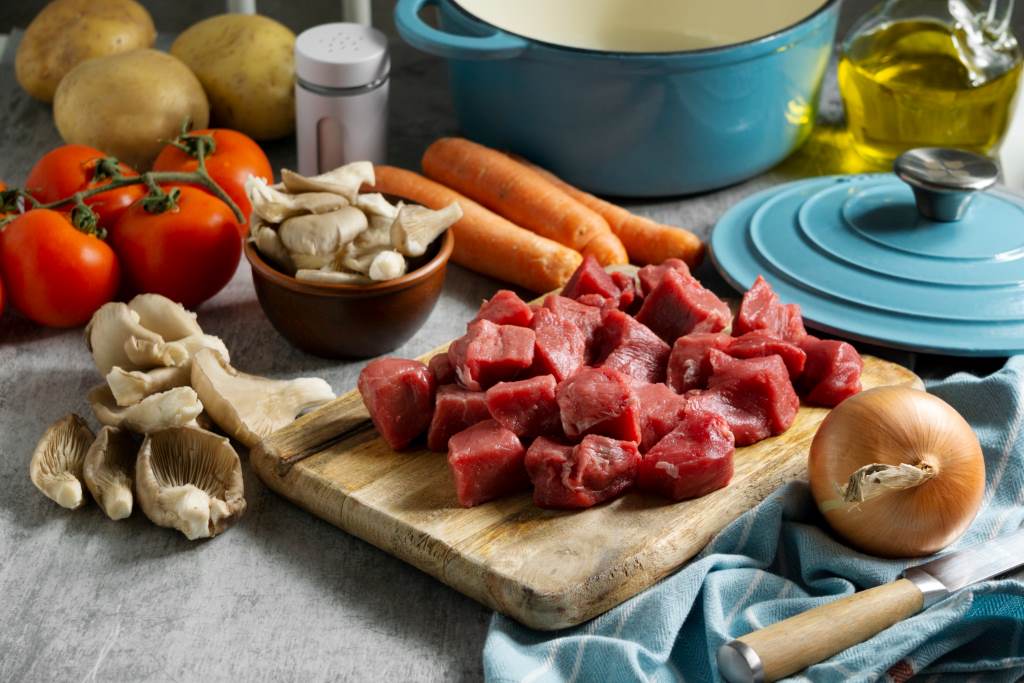In the culinary realm, few delicacies can rival the rich, complex flavors of artisan-cured meats. Whether it’s the intense aroma of prosciutto, the bold taste of salami, or the tender texture of coppa, these savory delights have captivated palates for centuries.
However, in an age where health-conscious eating is becoming increasingly prevalent, many individuals are hesitant to indulge in cured meats due to concerns about their nutritional value and potential health risks.
In this comprehensive guide, we aim to decode the world of artisan-cured meats, shedding light on their origins, production methods, nutritional profiles, and health implications. By understanding the intricacies of these age-old delicacies, you’ll be better equipped to enjoy them responsibly while savoring every mouthful.

Origins and Tradition
To truly appreciate artisan-cured meats, it’s essential to delve into their origins and the traditions that have shaped their production over the centuries. Curing, the process of preserving meat through salt, has been practiced since ancient times as a means of extending shelf life and enhancing flavor.
Historically, curing was born out of necessity, allowing communities to store meat for extended periods without refrigeration. In regions with abundant salt deposits, such as the Mediterranean and parts of Asia, curing techniques flourished, giving rise to a diverse array of cured meat traditions.
One of the most iconic examples of artisan-cured meats is Italian prosciutto, which traces its roots back to Roman times. Made from the hind leg of a pig, prosciutto undergoes a meticulous curing process that can last for months or even years. The result is a delicately flavored, thinly sliced ham that is revered for its depth of flavor and versatility in culinary applications.
Similarly, Spanish jamón ibérico showcases the time-honored tradition of curing practiced in the Iberian Peninsula. Derived from acorn-fed Iberian pigs, jamón ibérico undergoes a lengthy curing process, during which the meat develops its distinctive marbling and nutty flavor profile. Revered as a gourmet delicacy, jamón ibérico reflects the Spanish commitment to quality and craftsmanship in cured meat production.
Production Methods
While the basic principles of curing remain consistent across different cultures, the specific methods and ingredients used can vary significantly. Artisan-cured meats are typically crafted using traditional techniques that prioritize quality, flavor, and authenticity.
The first step in the production of artisan-cured meats is the selection of high-quality meat, sourced from reputable suppliers who prioritize animal welfare and sustainable practices. Whether it’s pork, beef, or game, the choice of meat is crucial to the final product’s flavor and texture.
Once the meat is selected, it undergoes a process of seasoning and curing, during which it is coated in a mixture of salt and spices. This initial curing stage draws out moisture from the meat, inhibiting the growth of harmful bacteria and creating an inhospitable environment for spoilage.
After the initial curing phase, the meat may undergo additional treatments, such as smoking, air-drying, or fermentation, depending on the desired flavor profile and regional traditions. Smoking, in particular, adds depth and complexity to cured meats, infusing them with aromatic nuances that enhance their overall appeal.
Throughout the curing process, artisan producers rely on time-honored techniques passed down through generations, often employing manual labor and meticulous attention to detail. This artisanal approach ensures that each batch of cured meat is imbued with the character and flavor that set it apart from mass-produced alternatives.

Nutritional Profile
When it comes to evaluating the nutritional profile of artisan-cured meats, there are several factors to consider. While cured meats are renowned for their rich flavor and protein content, they are also associated with certain health considerations that warrant attention.
One of the primary concerns surrounding cured meats is their high sodium content, which can contribute to elevated blood pressure and cardiovascular issues if consumed in excess. During the curing process, salt is used as a preservative, and while it plays a crucial role in inhibiting bacterial growth, it can also impart a salty taste to the finished product.
In addition to salt, cured meats often contain saturated fats, which can raise cholesterol levels and increase the risk of heart disease when consumed in large quantities. However, not all fats are created equal, and some artisan-cured meats, such as those made from lean cuts of pork or beef, may have a more favorable fat profile than others.
On the flip side, cured meats are a rich source of protein, essential nutrients, and micronutrients, including iron, zinc, and B vitamins. When enjoyed in moderation as part of a balanced diet, they can contribute to satiety, muscle repair, and overall nutritional adequacy.
Health Implications
While artisan-cured meats undoubtedly have their nutritional merits, it’s essential to approach them with mindfulness and moderation, especially for individuals with specific dietary considerations or health concerns.
For those watching their sodium intake, opting for reduced-sodium or low-sodium varieties of cured meats can help mitigate the risk of excessive salt consumption. Likewise, choosing leaner cuts of meat and trimming excess fat can reduce the overall calorie and fat content of cured meat products.
In addition to moderating portion sizes and selecting healthier options, pairing cured meats with fiber-rich foods, such as whole grains, fruits, and vegetables, can help balance out their nutritional profile and promote digestive health. Incorporating fresh herbs, spices, and citrus flavors can also enhance the taste of cured meats without relying solely on salt or fat for seasoning.
Furthermore, it’s essential to consider the broader environmental and ethical implications of meat consumption, particularly in light of concerns surrounding animal welfare, sustainability, and greenhouse gas emissions. Opting for artisan-cured meats from producers who prioritize sustainable farming practices and ethical treatment of animals can help support more responsible food systems.

Conclusion
In conclusion, artisan-cured meats represent a time-honored tradition of craftsmanship and culinary excellence, offering a tantalizing array of flavors and textures for discerning palates to enjoy. However, their indulgence should be tempered with awareness of their nutritional profile and health implications.
By understanding the origins, production methods, nutritional profiles, and health implications of artisan-cured meats, consumers can make informed choices that align with their dietary preferences and wellness goals. Whether enjoyed as a gourmet treat or incorporated into everyday meals, artisan-cured meats have a place in a balanced and health-conscious diet, enriching the culinary landscape with their savory delights.










